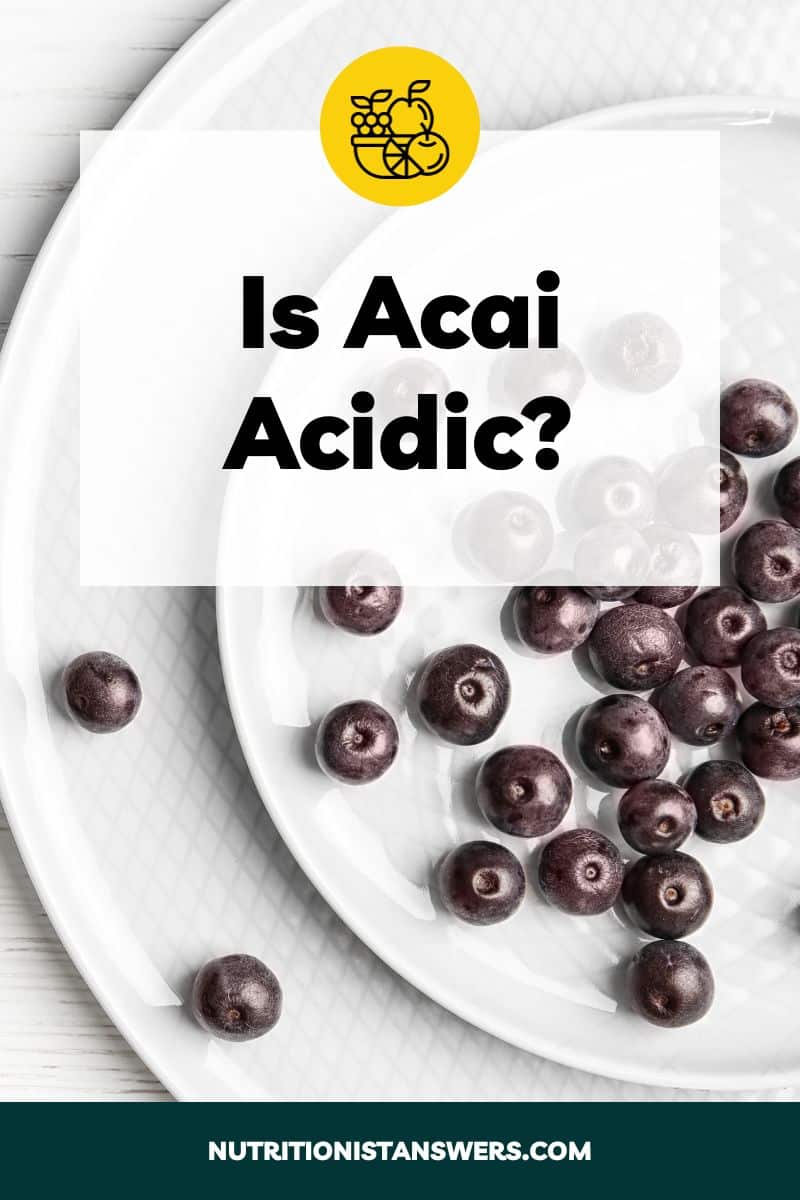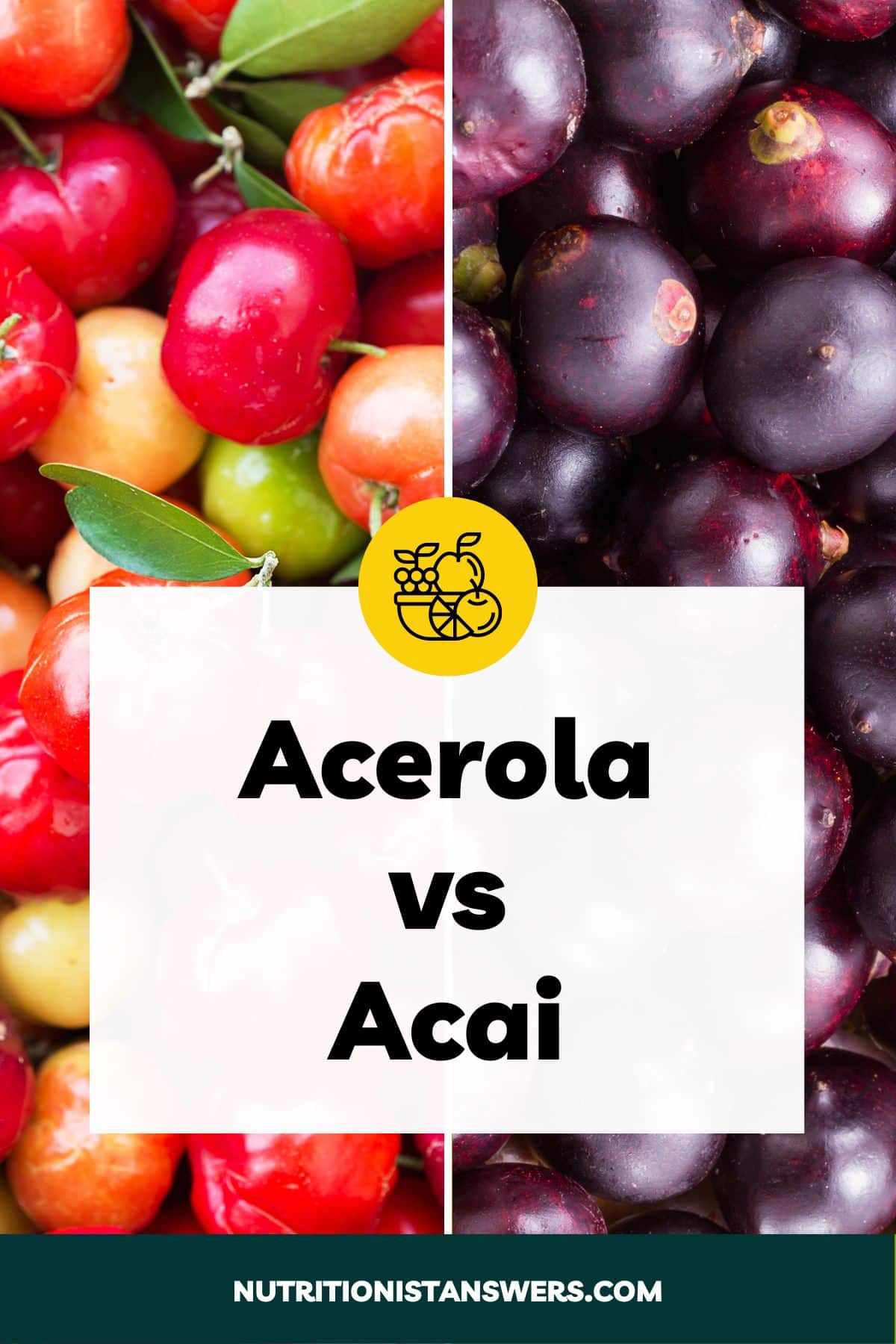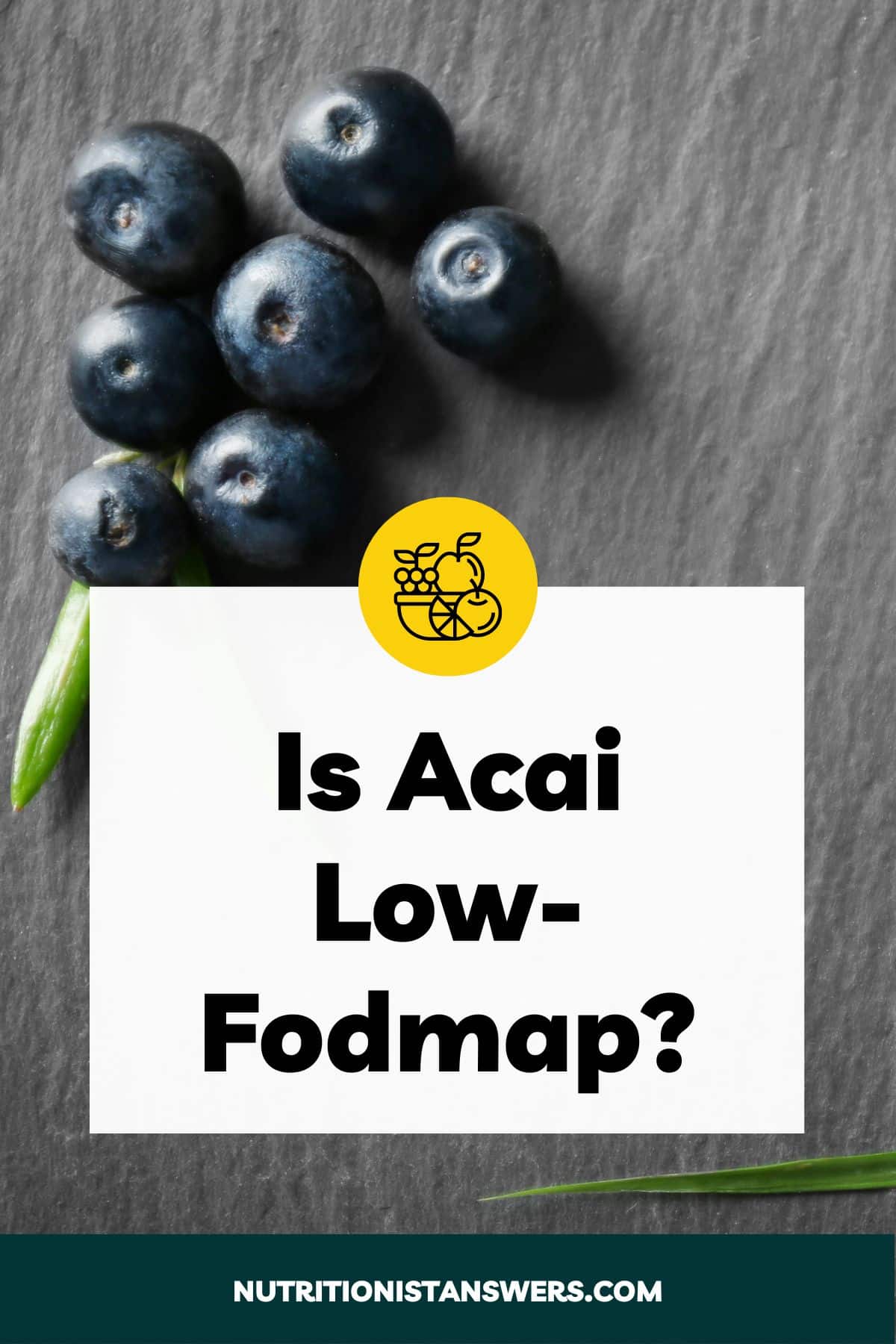Acai is a fruit that’s grown in the Amazon rainforest. It’s best known for its high antioxidant content and has gained a reputation as a “superfood” among health enthusiasts.
Like most fruits, acai is acidic due to the presence of natural acids that lower its pH below 7. These acids also give acai its unique flavor and contribute to its health benefits.
Want to delve deeper into the science behind why acai is acidic? Keep reading! We’ll also discuss the potential side effects of eating acidic fruits and how acai’s acidity compares to other fruits.
Why is acai acidic?
Acai is acidic because it naturally contains large amounts of organic acids (1, 2).
Ascorbic acid, also known as vitamin C, is one of these, known for its antioxidant properties and benefits for skin and immune health (3, 4).
Phenolic acids, such as caffeic acid and ferulic acid, are also present. These compounds offer protection against inflammation and oxidative stress (5)
In addition to naturally occurring acids, citric acid is often added to frozen acai during processing. Citric acid protects anthocyanins and other beneficial compounds in acai, which are unstable at higher pH levels (6).
Together, all of these acids lower the pH value of acai to around 5 (anything less than 7 is considered acidic) (7).
Is acai more or less acidic than other fruits?
Acai is less acidic than most other fruits, with a pH around 5.0 (7, 8).
Here’s a list of the pH values for various fruits, in order from least acidic to most acidic (8, 9):
- Cantaloupe: 6.2-7.1
- Honeydew melon: 6.0-6.7
- Persimmons: 5.4-5.8
- Papaya: 5.2-5.7
- Watermelon: 5.2-5.6
- Figs: 5.1-5.3
- Acai: 5.0-5.2
- Bananas: 5.0-5.3
- Apricots: 4.2-4.7
- Cherries: 4.0-4.5
- Nectarines: 3.9-4.2
- Oranges: 3.7-4.3
- Plums: 3.6-5.0
- Blackberries: 3.6-4.5
- Pears: 3.5-4.1
- Raspberries: 3.5-4.0
- Mangoes: 3.4-4.6
- Peaches: 3.3-4.1
- Strawberries: 3.3-3.5
- Apples: 3.3-3.4
- Grapefruit: 3.2-3.8
- Pineapple: 3.2-3.6
- Blueberries: 3.1-3.3
- Pomegranate: 2.9-3.1
- Grapes: 2.8-3.8
- Limes: 2.0-2.8
Acai is more acidic than figs, papaya, persimmons, and melons but less acidic than berries, citrus, and many other fruits. Its acidity is most similar to bananas, which have a pH value of 5.0-5.2.
Potential side effects of eating acidic fruits
Some people worry that eating acidic fruits, like acai, could lead to the following side effects:
1. Acid reflux (low risk)
Acai and other acidic foods can potentially trigger or worsen acid reflux, which occurs when the acidic contents of the stomach flow back into the esophagus.
Many people report that acidic foods, especially citrus fruits and tomatoes, increase heartburn and other symptoms of acid reflux (10).
However, other research has linked eating fruit with a LOWER risk of developing GERD, a chronic form of acid reflux (11, 12).
To determine if acai is a trigger for you, consider eliminating it from your diet for a period and then reintroducing it to see if symptoms change.
2. Dental erosion (low risk)
Acai, like many acidic foods and drinks, can potentially contribute to dental erosion, which occurs when the hard outer layer of your teeth (called enamel) is worn away by acids.
Over time, the loss of tooth enamel can increase sensitivity and make your teeth more susceptible to damage and decay, including cavities (13).
In moderation, acai is unlikely to cause significant dental erosion, especially if you brush your teeth and follow other oral hygiene practices.
Are there any less acidic alternatives to acai?
Figs, papaya, and watermelon are slightly less acidic than acai, while cantaloupe and honeydew melon have pH values that are closer to neutral.
For most people, there’s no reason to avoid acai or other fruits solely based on their acidity.
However, if you have acid reflux, it may be helpful to cut back on acidic fruits, especially citrus, to see if you notice any improvement in your symptoms (14).
Final thoughts
While acai is acidic, with a pH around 5, it is less acidic than most other fruits, such as berries and citrus fruits.
For those concerned about acid reflux or dental erosion, the risks associated with acai are generally low, especially when consumed in moderation as part of a balanced diet.
If you’re looking for less acidic options, fruits like figs, papaya, and melons are great alternatives.
Amy Richter is a Registered Dietitian Nutritionist based in Missouri. She is an experienced nutrition writer and medical advisor for Healthline and Medical News Today. Amy is passionate about all things food-related and enjoys translating complex science into easy-to-understand articles.





